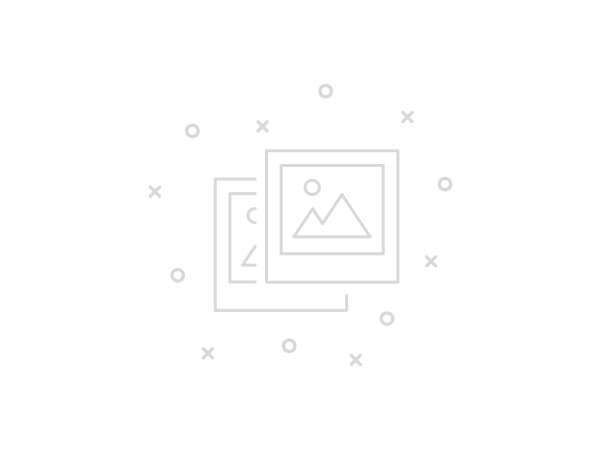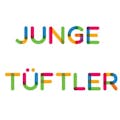Hardware components | ||||||
 |
| × | 1 | |||
Software apps and online services | ||||||
 |
| |||||
Read our blogpost about it
int instrument = 13; // Hier die Nummer des Instruments eintragen.
int tonhoehe = -0; // Hier die Tonhhe eingeben (0 ist "normal", >0 hher, <0 tiefer).
int lautstaerke =127; // Hier die Lautstrke eintragen (0 ist aus, 127 maximal).
boolean nurWeisseNoten = false; // Hier false eintragen fr weie und schwarze Noten, true fr nur die weien
/* Alle Midi-Instrumente
1 Acoustic Grand Piano 33 Acoustic Bass 65 Soprano Sax 97 Rain (FX 1)
2 Bright Acoustic Piano 34 Electric Bass (finger) 66 Alto Sax 98 Sound Track (FX 2)
3 Electric Grand Piano 35 Electric Bass (pick) 67 Tenor Sax 99 Crystal (FX 3)
4 Honky-tonk Piano 36 Fretless Bass 68 Baritone Sax 100 Atmosphere (FX 4)
5 Electric Piano 1 37 Slap Bass 1 69 Oboe 101 Brigthness (FX 5)
6 Electric Piano 2 38 Slap Bass 2 70 English Horn 102 Goblins (FX 6)
7 Harpsichord 39 Synth Bass 1 71 Bassoon 103 Echoes (FX 7)
8 Clavi 40 Synth Bass 2 72 Clarinet 104 Sci-fi (FX 8)
9 Celesta 41 Violin 73 Piccolo 105 Sitar
10 Glockenspiel 42 Viola 74 Flute 106 Banjo
11 Music Box 43 Cello 75 Recorder 107 Shamisen
12 Vibraphone 44 Contrabass 76 Pan Flute 108 Koto
13 Marimba 45 Tremolo Strings 77 Blown Bottle 109 Kalimba
14 Xylophone 46 Pizzicato Strings 78 Shakuhachi 110 Bag Pipe
15 Tubular Bells 47 Orchestral Harp 79 Whistle 111 Fiddle
16 Dulcimer 48 Trimpani 80 Ocarina 112 Shanai
17 Drawbar Organ 49 String Ensembles 1 81 Square Lead (Lead 1) 113 Tinkle Bell
18 Percussive Organ 50 String Ensembles 2 82 Saw Lead (Lead) 114 Agogo
19 Rock Organ 51 Synth Strings 1 83 Calliope (Lead 3) 115 Pitched Percussion
20 Church Organ 52 Synth Strings 2 84 Chiff Lead (Lead 4) 116 Woodblock
21 Reed Organ 53 Choir Aahs 85 Charang Lead (Lead 5) 117 Taiko
22 Accordion 54 Voice oohs 86 Voice Lead (Lead) 118 Melodic Tom
23 Harmonica 55 Synth Voice 87 Fifths Lead (Lead 7) 119 Synth Drum
24 Tango Accordion 56 Orchestra Hit 88 Bass + Lead (Lead 8) 120 Reverse Cymbal
25 Acoustic Guitar (nylon) 57 Trumpet 89 New Age (Pad 1) 121 Guitar Fret Noise
26 Acoutstic Guitar (steel) 58 Trombone 90 Warm Pad (Pad 2) 122 Breath Noise
27 Electric Guitar (jazz) 59 Tuba 91 Polysynth (Pad 3) 123 Seashore
28 Electric Guitar (clean) 60 Muted Trumpet 92 Choir (Pad 4) 124 Bird Tweet
29 Electric Guitar (muted) 61 French Horn 93 Bowed (Pad 5) 125 Telephone Ring
30 Overdriven Guitar 62 Brass Section 94 Metallic (Pad 6) 126 Helicopter
31 Distortion Guitar 63 Synth Brass 1 95 Halo (Pad 7) 127 Applause
32 Guitar Harmonics 64 Synth Brass 2 96 Sweep (Pad 8) 128 Gunshot
*/
int instr = instrument - 1;
// compiler error handling
#include "Compiler_Errors.h"
// serial rate
#define baudRate 57600
// include the relevant libraries
#include <MPR121.h>
#include <Wire.h>
#include <SoftwareSerial.h>
SoftwareSerial mySerial(12, 10); // Soft TX on 10, we don't use RX in this code
// Touch Board Setup variables
#define firstPin 0
#define lastPin 11
// VS1053 setup
byte note = 0; // The MIDI note value to be played
byte resetMIDI = 8; // Tied to VS1053 Reset line
byte ledPin = 13; // MIDI traffic inidicator
// key definitions
const byte whiteNotes[] = {60, 62, 64, 65, 67, 69, 71, 72, 74, 76, 77, 79, 81};
const byte allNotes[] = {60, 61, 62, 63, 64, 65, 66, 67, 68, 69, 70, 71};
// if you're using this with drum sounds instead of notes, you can choose each
// individual drum sound from the bank shown at the bottom of this code
// where it says "PERCUSSION INSTRUMENTS (GM1 + GM2)"
const byte drumNotes[] = {60, 36, 41, 44, 56, 54, 58, 36, 72, 79, 76, 58};
void setup(){
Serial.begin(baudRate);
// uncomment the line below if you want to see Serial data from the start
// while (!Serial);
// Setup soft serial for MIDI control
mySerial.begin(31250);
Wire.begin();
// 0x5C is the MPR121 I2C address on the Bare Touch Board
if(!MPR121.begin(0x5C)){
Serial.println("error setting up MPR121");
switch(MPR121.getError()){
case NO_ERROR:
Serial.println("no error");
break;
case ADDRESS_UNKNOWN:
Serial.println("incorrect address");
break;
case READBACK_FAIL:
Serial.println("readback failure");
break;
case OVERCURRENT_FLAG:
Serial.println("overcurrent on REXT pin");
break;
case OUT_OF_RANGE:
Serial.println("electrode out of range");
break;
case NOT_INITED:
Serial.println("not initialised");
break;
default:
Serial.println("unknown error");
break;
}
while(1);
}
// pin 4 is the MPR121 interrupt on the Bare Touch Board
MPR121.setInterruptPin(4);
// initial data update
MPR121.updateTouchData();
// Reset the VS1053
pinMode(resetMIDI, OUTPUT);
digitalWrite(resetMIDI, LOW);
delay(100);
digitalWrite(resetMIDI, HIGH);
delay(100);
// initialise MIDI
setupMidi();
}
void loop(){
if(MPR121.touchStatusChanged()){
MPR121.updateAll();
// code below sets up the board essentially like a piano, with an octave
// mapped to the 12 electrodes, each a semitone up from the previous
for(int i=firstPin; i<=lastPin; i++){
// you can choose how to map the notes here - try replacing "whiteNotes" with
// "allNotes" or "drumNotes"
if(nurWeisseNoten) {
note = whiteNotes[lastPin-i]+tonhoehe;
} else {
note = allNotes[lastPin-i]+tonhoehe;
}
if(MPR121.isNewTouch(i)){
//Note on channel 1 (0x90), some note value (note), 75% velocity (0x60):
noteOn(0, note, 0x60);
Serial.print("Note ");
Serial.print(note);
Serial.println(" on");
} else if(MPR121.isNewRelease(i)) {
// Turn off the note with a given off/release velocity
noteOff(0, note, 0x60);
Serial.print("Note ");
Serial.print(note);
Serial.println(" off");
}
}
}
}
// functions below are little helpers based on using the SoftwareSerial
// as a MIDI stream input to the VS1053 - all based on stuff from Nathan Seidle
// Send a MIDI note-on message. Like pressing a piano key.
// channel ranges from 0-15
void noteOn(byte channel, byte note, byte attack_velocity) {
talkMIDI( (0x90 | channel), note, attack_velocity);
}
// Send a MIDI note-off message. Like releasing a piano key.
void noteOff(byte channel, byte note, byte release_velocity) {
talkMIDI( (0x80 | channel), note, release_velocity);
}
// Sends a generic MIDI message. Doesn't check to see that cmd is greater than 127,
// or that data values are less than 127.
void talkMIDI(byte cmd, byte data1, byte data2) {
digitalWrite(ledPin, HIGH);
mySerial.write(cmd);
mySerial.write(data1);
// Some commands only have one data byte. All cmds less than 0xBn have 2 data bytes
// (sort of: http://253.ccarh.org/handout/midiprotocol/)
if( (cmd & 0xF0) <= 0xB0)
mySerial.write(data2);
digitalWrite(ledPin, LOW);
}
// SETTING UP THE INSTRUMENT:
// The below function "setupMidi()" is where the instrument bank is defined. Use the VS1053 instrument library
// below to aid you in selecting your desire instrument from within the respective instrument bank
void setupMidi(){
// Volume - don't comment out this code!
talkMIDI(0xB0, 0x07, lautstaerke); //0xB0 is channel message, set channel volume to max (127)
// ---------------------------------------------------------------------------------------------------------
// Melodic Instruments GM1
// ---------------------------------------------------------------------------------------------------------
// To Play "Electric Piano" (5):
// talkMIDI(0xB0, 0, 0x00); // Default bank GM1
// We change the instrument by changing the middle number in the brackets
// talkMIDI(0xC0, number, 0); "number" can be any number from the melodic table below
// talkMIDI(0xC0, 119, 0); // Set instrument number. 0xC0 is a 1 data byte command(55,0)
// ---------------------------------------------------------------------------------------------------------
// Percussion Instruments (Drums, GM1 + GM2)
// ---------------------------------------------------------------------------------------------------------
// uncomment the two lines of code below to use - you will also need to comment out the two "talkMIDI" lines
// of code in the Melodic Instruments section above
talkMIDI(0xB0, 0, 0x00); // Bank select: drums
talkMIDI(0xC0, instr, 0); // Set a dummy instrument number
// ---------------------------------------------------------------------------------------------------------
}
/*
PERCUSSION INSTRUMENTS (GM1 + GM2)
When in the drum bank (0x78), there are not different instruments, only different notes.
To play the different sounds, select an instrument # like 5, then play notes 27 to 87.
27 High Q 43 High Floor Tom 59 Ride Cymbal 2 75 Claves
28 Slap 44 Pedal Hi-hat [EXC 1] 60 High Bongo 76 Hi Wood Block
29 Scratch Push [EXC 7] 45 Low Tom 61 Low Bongo 77 Low Wood Block
30 Srcatch Pull [EXC 7] 46 Open Hi-hat [EXC 1] 62 Mute Hi Conga 78 Mute Cuica [EXC 4]
31 Sticks 47 Low-Mid Tom 63 Open Hi Conga 79 Open Cuica [EXC 4]
32 Square Click 48 High Mid Tom 64 Low Conga 80 Mute Triangle [EXC 5]
33 Metronome Click 49 Crash Cymbal 1 65 High Timbale 81 Open Triangle [EXC 5]
34 Metronome Bell 50 High Tom 66 Low Timbale 82 Shaker
35 Acoustic Bass Drum 51 Ride Cymbal 1 67 High Agogo 83 Jingle bell
36 Bass Drum 1 52 Chinese Cymbal 68 Low Agogo 84 Bell tree
37 Side Stick 53 Ride Bell 69 Casbasa 85 Castanets
38 Acoustic Snare 54 Tambourine 70 Maracas 86 Mute Surdo [EXC 6]
39 Hand Clap 55 Splash Cymbal 71 Short Whistle [EXC 2] 87 Open Surdo [EXC 6]
40 Electric Snare 56 Cow bell 72 Long Whistle [EXC 2]
41 Low Floor Tom 57 Crash Cymbal 2 73 Short Guiro [EXC 3]
42 Closed Hi-hat [EXC 1] 58 Vibra-slap 74 Long Guiro [EXC 3]
*/
2 projects • 9 followers
Junge Tüftler offers children a playful access to electronics and programming and provides them with the right tools to create the world of tomorrow.
Thanks to Adrian Jagusch and Zarko Jovasevic.





Comments